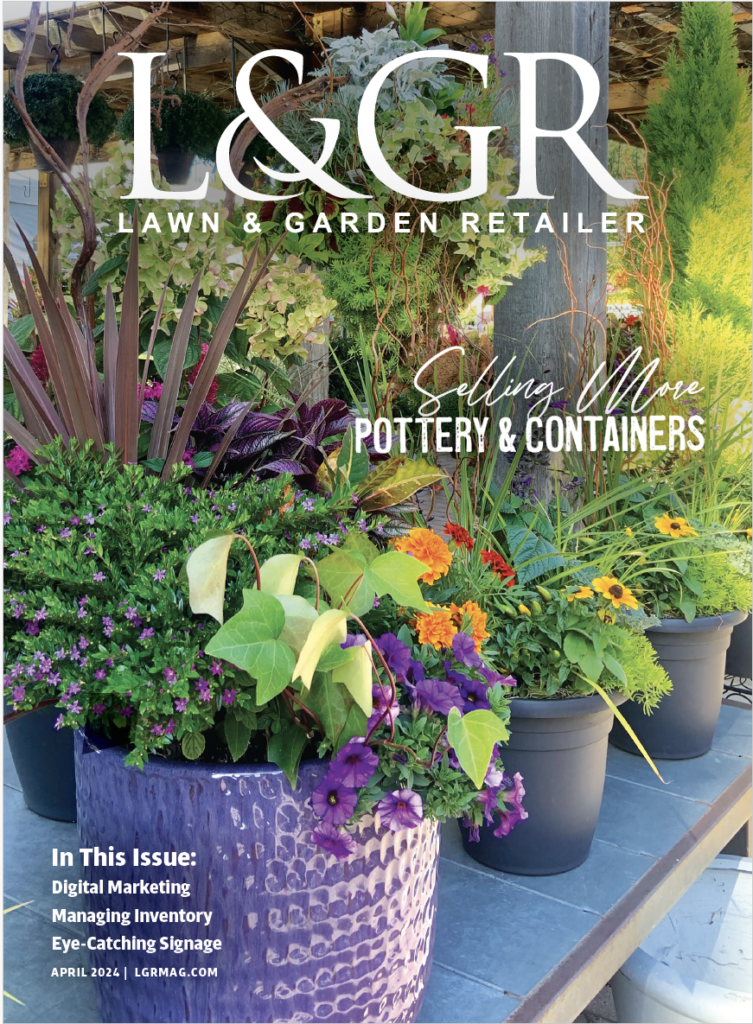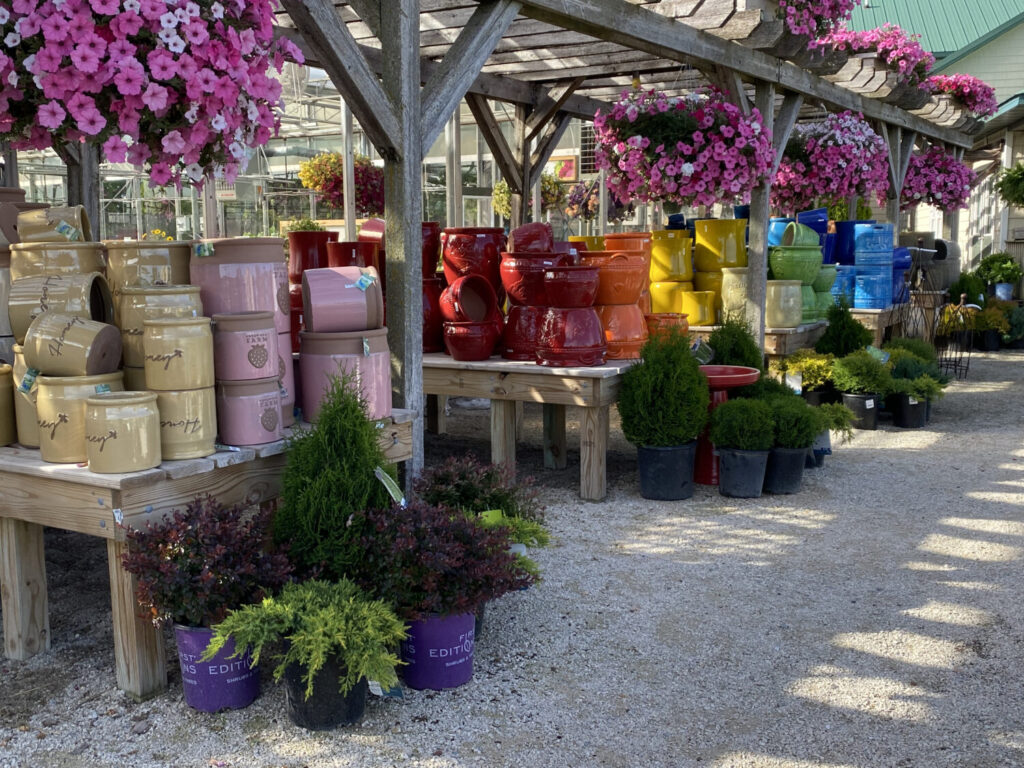
IGCs share successful merchandising strategies
Anyone in retail knows that merchandising isn’t a one-and-done procedure; it’s a never-ending process of refreshing and rearranging to make sure merchandise is seen. After all, if your customers can’t see it, they can’t buy it.
Lawn & Garden Retailer recently chatted with Heather Rollins at Fairview Garden Center and Kori Zawojski at Sunnypoint Gardens to get their insights and inspirations for merchandising in their stores.
Springing Forward
Rollins is marketing director at Fairview Garden Center in Raleigh, North Carolina. She’s also in charge of buying and merchandising in the store, the pottery department and the outdoor living department.
She starts merchandising for the spring season in February, so that everything is ready when good weather days bring customers in — but can only do so after all said merchandising has arrived.
“It’s kind of a balancing act,” she says. “We have a large store to fill, and it looks kind of empty, but it’s hard to do any displays until everything’s in. So I try to have everything in by March 1, so it’s ready for a spring display — which is early, but you have to be the first one, right?
“When people are ready to start thinking about Easter, we better already have it out and ready to go before they even think about it.”
Rollins says she usually comes up with a merchandising theme — but it must be garden-related.
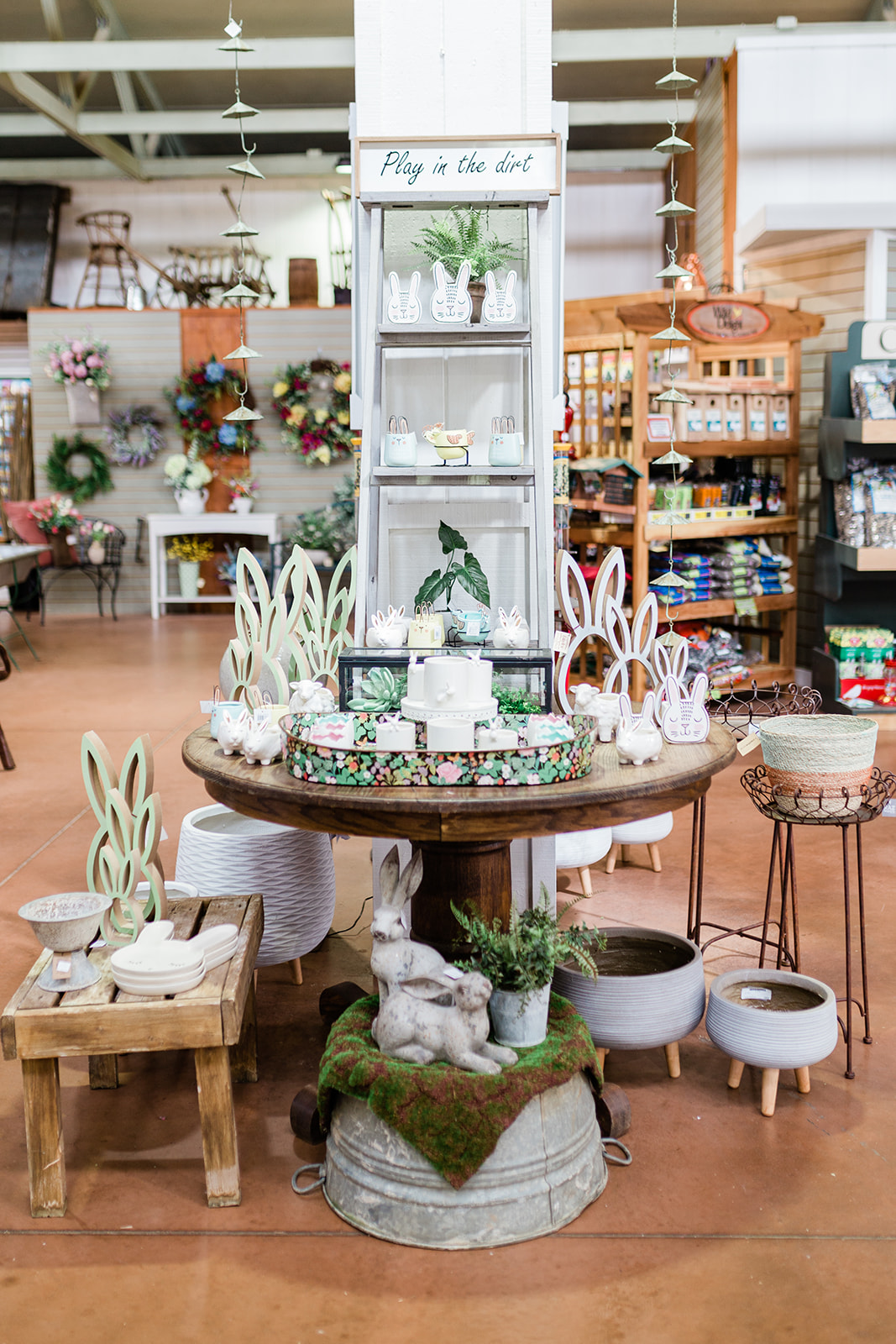
“This year, it’s bugs and butterflies and things like that throughout the store for displays — things that really make people think of gardening. I try not to buy or merchandise or do anything unless it has some sort of garden theme. It has to be garden-related — a pot that can be used in a garden, something that can be for a garden party, something that can be used for propagation, something that ties into a plant. It has to be more of a tie-in, so, for the plants that we sell and grow.”
Effective Merchandising Strategies
Rollins says effective merchandising is “about creating something where people get inspiration and want to pick up a product because of where it is and how it’s displayed. It’s not just about making it beautiful — the whole idea is to sell it, right?
“And we focus a lot on color blocking. So if somebody’s looking for a pot for a plant to go in — which we sell a lot of smaller pottery inside the store — usually you’re thinking about the theme of your home and your color scheme; you’re thinking, ‘Well, I have a lot of pink’ or ‘I have a lot of blue.’ So we color block a lot to help streamline the search process for customers inside the store with our merchandising. I think that helps sell things a lot faster. Some people can find it more easily.”
Color blocking continues outside the store as well, where she pairs different shades of pottery to the plants.
“Having big blue pots in a sea of blue flowers or an orange pot in a sea of blue flowers creates an opposite end of the color wheel type thing, so people can see how things really make each other pop and tie in.”
Creating a Garden Oasis
Garden centers can display certain types of plants together, such as shade-tolerant varieties, and arrange them in a vignette so customers can see what they’d look like planted together — and want to buy them.
“When we’re creating a display for green goods, we’re thinking more about selling garden inspiration and showing things that pair well together. So if you have a shade garden, you can choose this shrub, but you can also add in these perennials for color,” Rollins says. “With our outdoor displays, it’s about showing a customer how they can truly create a garden oasis in one little small corner of their yard.”
But it’s not all about looks, she says. “We also have to make sure that we’re putting things in a display that grow well together, so the customer ultimately has success if they purchase from a specific display.”
And timeliness matters. “For us, it’s about creating a display that will have high turns. So if a flower is flowering right now, and you know it’s going to be in its prime flower that weekend, we put a display in a high traffic area so that those things move the quickest. Displays and merchandising have to look good, but also need to create a want in the customer.”
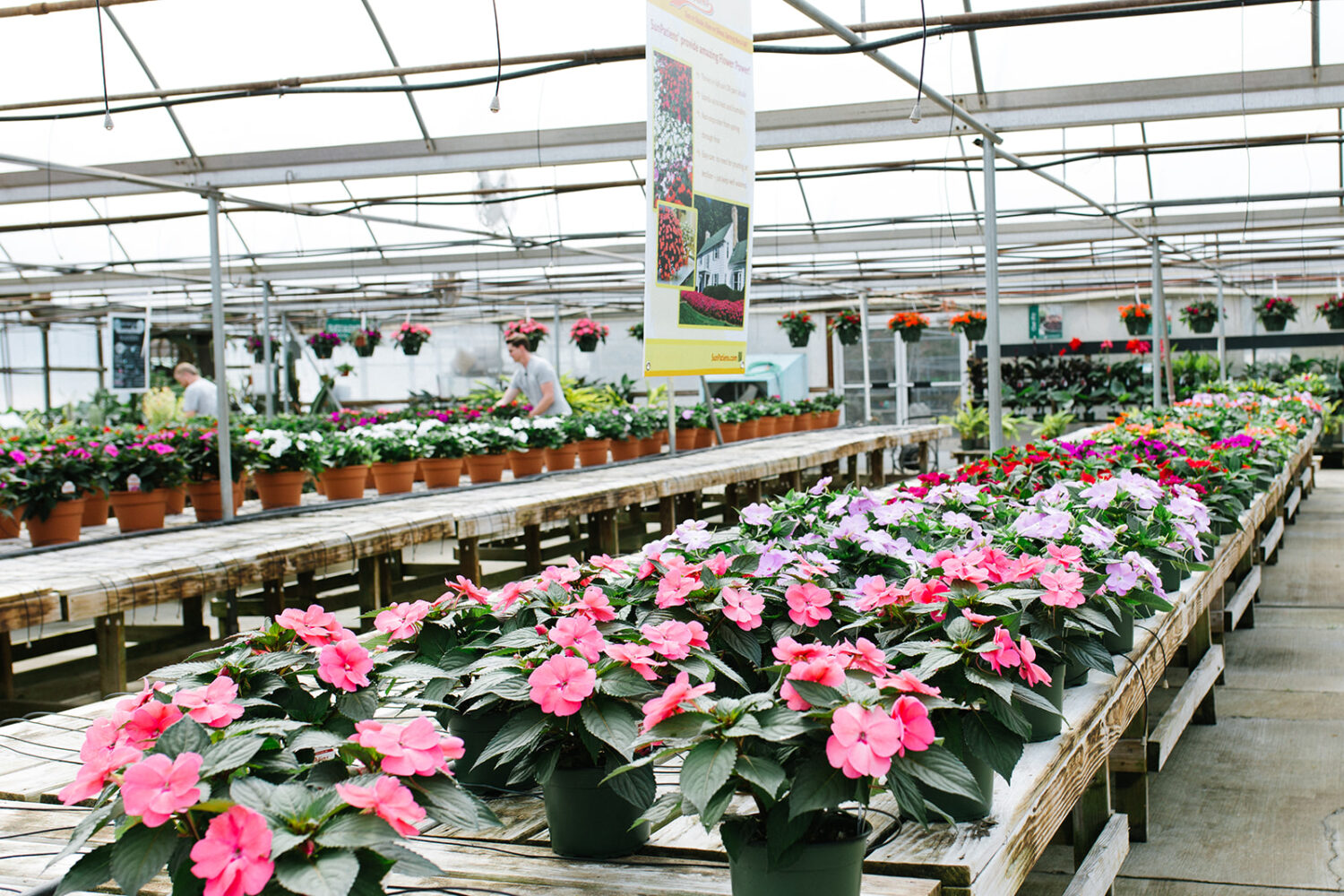
Signage as a Silent Seller
Fairview Garden Center’s signage plays a role in not only merchandising but also standing in when a staffer might not be immediately available.
“With our green goods displays, we always make sure that we have proper signage with the plants that are in those displays so, if a sales associate isn’t right there to explain to a customer, they can easily read the tag and the sign to know exactly how they can use it in their garden.”
Rollins says they also use signage for cross merchandising as “silent sellers” for related products, such as the proper fertilizer for vegetable plants.
“We have signage around the store that says, ‘This is your recipe for success.’ We have those in our perennial department, in the greenhouse and in the nursery. The signs say, ‘If you’re buying a plant, you need to get these three products to go with it in order to ensure success when they’re planted.’”
Keeping It Fresh
Kori Zawojski, owner of Sunnypoint Gardens in Door County, Wisconsin, with her husband Tony, works with her team to update green goods displays in the spring.
“We’re fairly small in size,” she says, “so we don’t have a buyer, or a merchandiser, like some bigger garden centers do. It’s pretty much me creating and then our team makes the display changes we’ve decided to do.
“We have a running joke, especially later in the season, called ‘Merchandising Mondays’ — which is me walking around the garden center, looking the displays and deciding what we’re rearranging. Then the team will spend the day or however much time it takes to update all the displays we’re changing.
“For green goods, we try to keep our displays fresh and updated every week, especially in the spring. Once we get to the summer and things start to slow down, they’re changed either weekly or biweekly, depending on if we’re having any promotions, what plants are looking fresh, or if we’re moving things around to accommodate new inventory or specific inventory that we want to make sure the customer focuses on.”
Shaking Things up
Last year, Zawojski says they became a Proven Winners destination “and it shook things up a bit in terms of how a whole section of our perennial shopping area looked. It was a really good experience for us, and we especially noticed how customers interacted differently with our displays in the destination shopping space.
“We created displays that were lifestyle or feature focused,” she says. “Deer resistant or pollinator plants were our biggest feature displays, and we also did displays mixing perennials and shrubs that were either color blocked or showed specific color pairings.
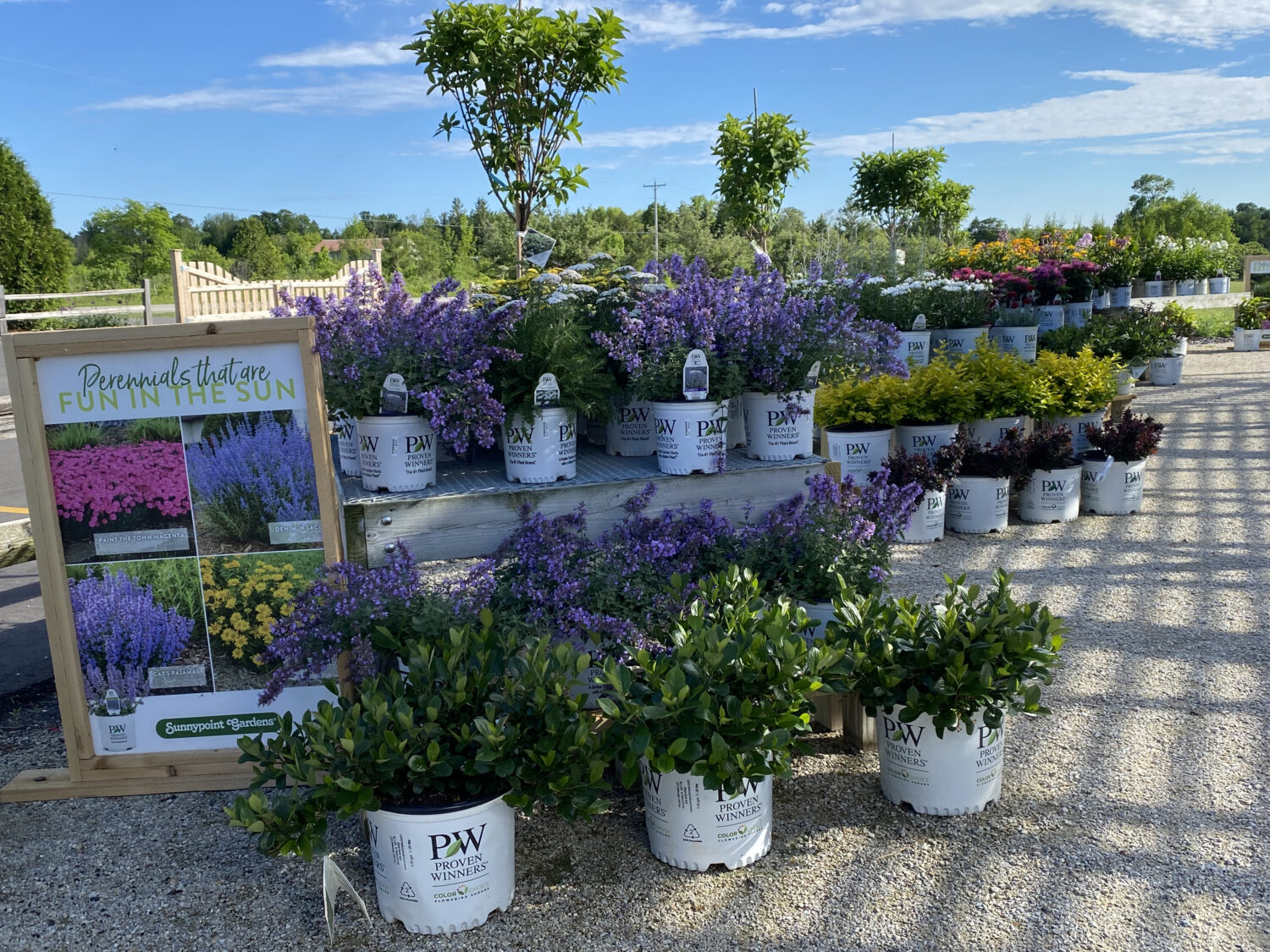
This season, we plan to take things we learned from our destination space and use them in feature displays located in our high traffic areas. We want the first benches customers see in each department to be displays intended to get their attention or inspire them. Mixed plant displays that focus on a specific feature, like shrubs for shade, or native sun perennials, are a great way to slow customers down and encourage them to browse other benches nearby.”
Zawojski says she also likes to have what she calls “the buffet shopping spaces, where we have larger benches filled with our entire selection of a particular plant, like daisies or heuchera, or an area filled with our entire rose selection, for example. They may like that we paired nepeta with yarrow in a display, but want a different variety or color of a plant we used. It’s important that they can still shop a larger selection of the plant they liked.”
She says that, as a Proven Winners destination, Sunnypoint Gardens works with Proven Winners on their merchandising signs for the destination space.
“For the destination displays, we’ll use a sign that features photos of the plants that are in the display — like a sign that says ‘What’s the Buzz?’ for a PW butterfly bush display. Sometimes the sign is the first thing the customer sees, and it can help them notice something in particular when they are in what often seems like a sea of benches filled with plants.”
She says marketing materials that Proven Winners provides include the Sunnypoint Gardens logo.
Keep It Moving
Moving merchandise around the store — even entire displays — helps with sales, Zawojski says.
“Moving the exact same display to a completely different part of the store can make a big difference because customers will notice different things, depending on how they’re walking through your store.”
In addition, it might help them to see something that they didn’t see the last time they passed through the area.

“Ironically, that’s something I learned when I worked in clothing very briefly,” she says, “that moving merchandise to a different rack can make a customer see something they hadn’t noticed before.
“We’re a very visually overwhelming industry, and it’s hard to know exactly what someone’s going to focus on first. Sometimes just moving things around can make a difference in terms of getting the customer’s attention.”
She, however, cautions against moving things around too much. “Customers tend to rely on items being consistently located. During our busiest months, our section of coleus is always in the same area of the greenhouse, for example. The mix of coleus displayed on those benches may change, but it’s always in the same location, at least until things slow down and our inventory sells through.
“The average customer spends maybe an hour in your store; having them searching for the must-have items on their list is never a good thing. You want the customer to quickly find the items they’re shopping for so they can make their choices and have more time to browse — and maybe add a few more things to their cart. Depending on the time of the season, it is really important to keep some things consistent.”
Merchandising Rule of Six
Zawojski says she has a rule for merchandising green goods of “nothing less than six. So if we get to the point where we don’t have enough availability of a particular variety of a plant in the display, we’ll switch it out with another variety or a different plant that looks good in the display’s color combination.”
And grouping plants by feature makes shopping easier for customers, she says. Sunnypoint Gardens can then direct customers to the benches with the plants that fill the garden need they’re looking for.
“I like to look at our plant displays as bench mannequins almost the same way a clothing store uses a mannequin,” she says. “We use bench mannequins as a way to display an assortment of what you can use if your particular interest is this. Like showing different plant color combinations, or showing different plants for a specific purpose, like attracting pollinators, or shade-loving shrubs, that customers can use in their own garden.”
She says baskets work the same way — customers may not buy the basket, but it might inspire them to choose a similar color combination or to buy the individual plants.
Waves of Color
In addition to grouping, Zawojski says she likes to do product color blocking and display plants in color waves.
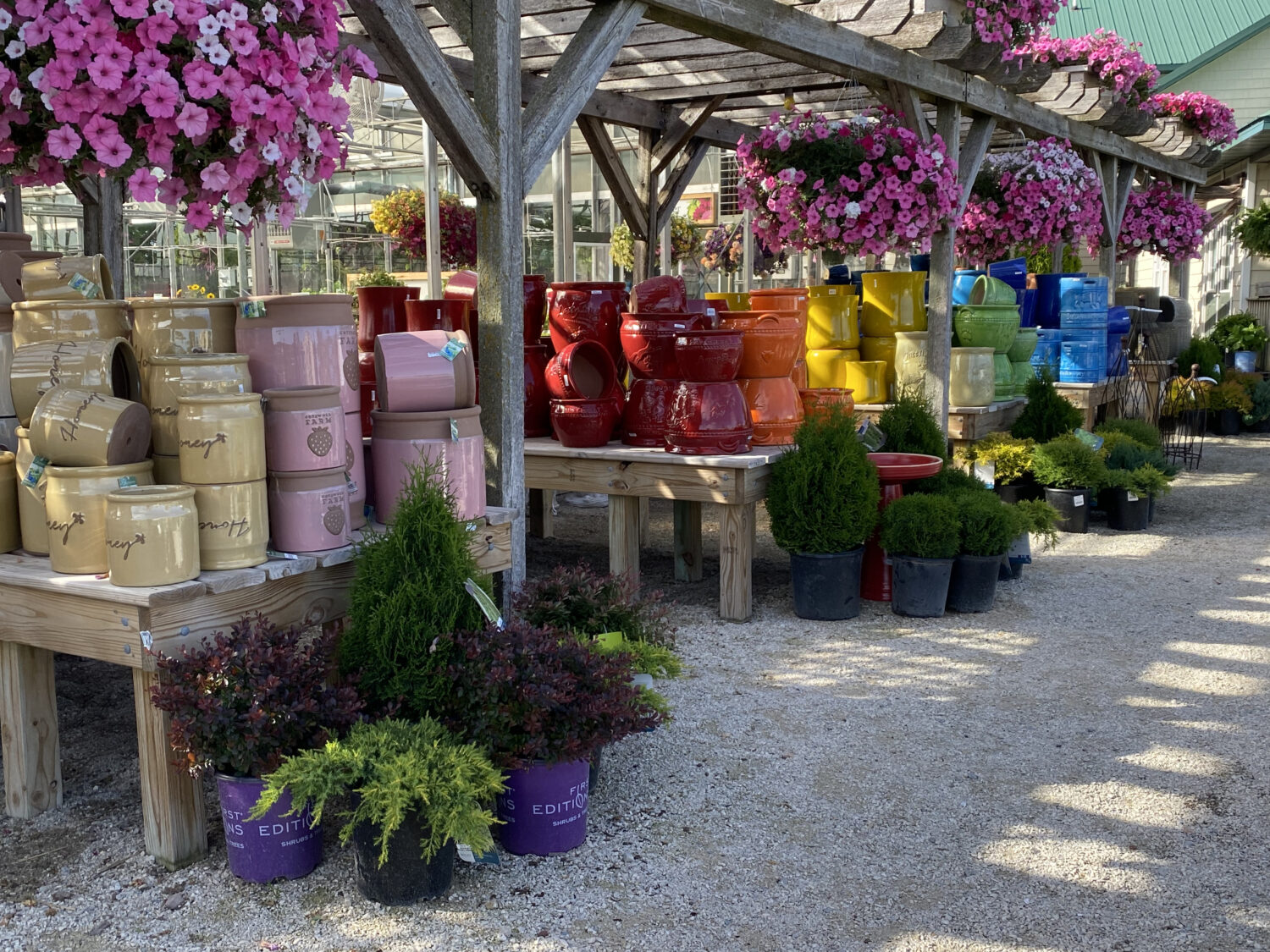
“A lot of our merchandise and especially our annual benches, like petunias, begonias and calibrachoa, are all displayed in a wave of color — the yellows lead to oranges, then to reds, and into pink shades and so on. These displays are great for a couple of reasons, 1) they are very appealing to the eye of the customer — and they don’t necessarily realize that. And 2) it’s really effective for us in terms of quickly being able to restock and also keep an eye on what the color trends are with customers.”
Sourcing Merchandising Ideas
Zawojski says she and her husband like to get out to other garden centers to see how their displays are set up.
“We like to stop at other garden centers and see what other people are doing with displays because there are lots of different ideas and ways of looking at things, and it’s always great to learn.”
She says clothing stores and other retailers are great places to find merchandising ideas, especially for their non-plant-material displays.
“Color trends are usually important,” she says. She pays attention to how Pottery Barn and other types of home decor retailers set up their stores “because style and color trends definitely translate when people shop for plants, and with the color choices they make.”
For an enhanced reading experience, view this article in our digital edition.



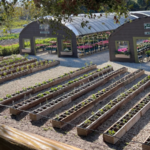
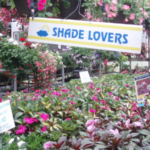
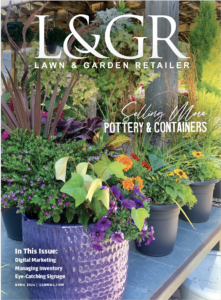
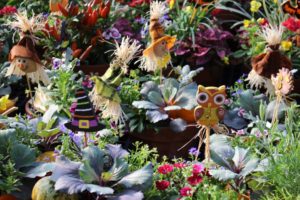
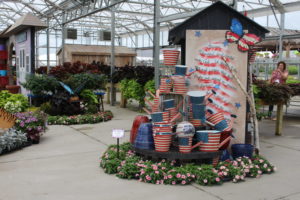
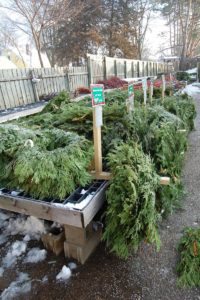
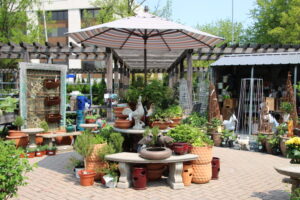
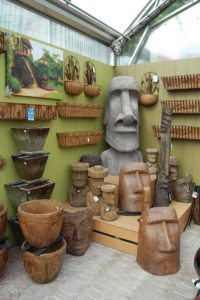
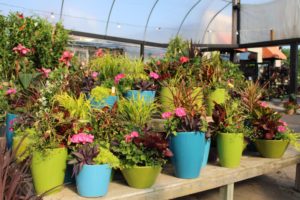
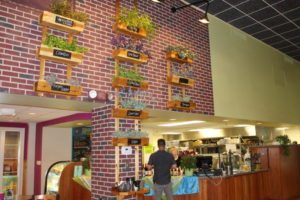
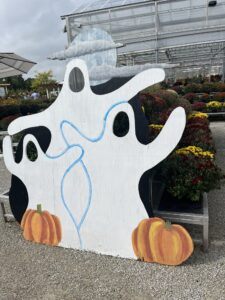
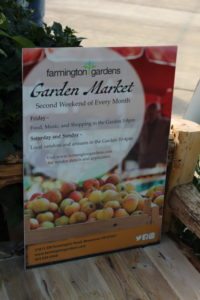
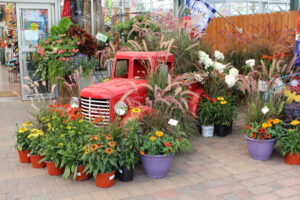
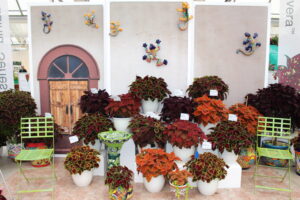

 Videos
Videos




